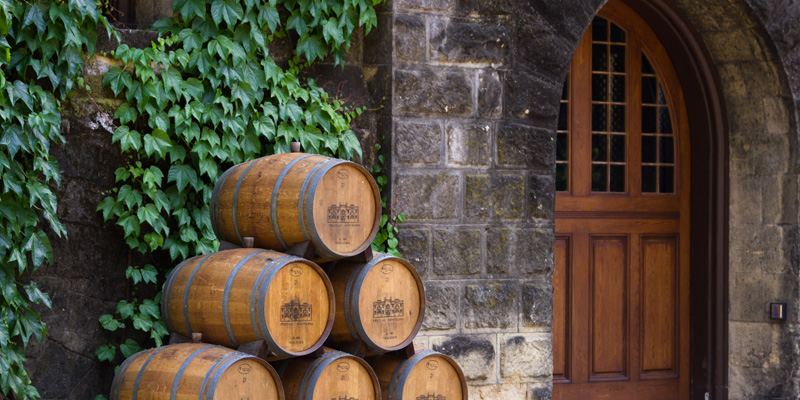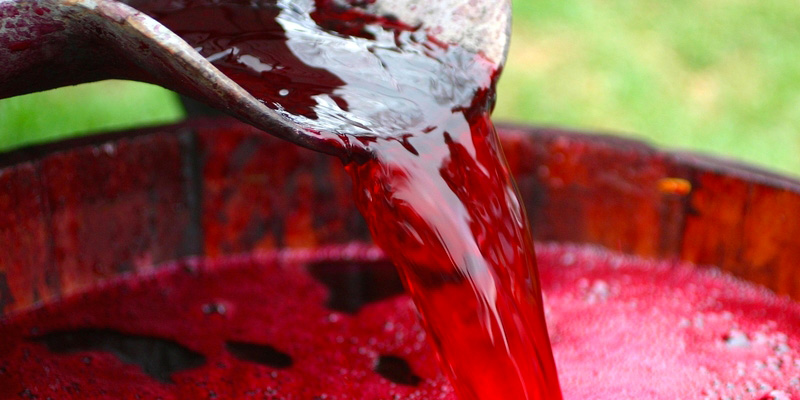With grapes solidly post-fermentation across the Northern Hemisphere, winemakers are finally beginning to give thanks for a little free time in their schedules. Now that the buzz of machinery has stopped, winemakers slip into the season filled with winemaking minutia which, while not as exciting as harvest, is crucial to producing good, drinkable wine.
Essentially, post-harvest winemaking is a study on how not to ruin a good thing, and in short that means protecting wines from oxidation. Oxidation is the process where by air breaks down the flavor compounds in wine, leaving it brown and tart instead of deliciously fruity. Like forgetting a bottle open overnight to discover it’s gone sour in the morning, the same changes occur in the flavor and aroma of wines in wineries, just on a much larger (and more expensive) scale.
During the period between harvest and bottling — which can take anywhere between two months and two years — winemakers aim for an oxygen sweet spot. Tiny amounts of air help wine develop over time, but too much quickly strips it of its fresh fruit flavors and bright color. The difference between perfectly aged wine and oxidized plonk is small and happens rapidly, so winemakers spend a lot of time watching and carefully monitoring their wines’ exposure to air.
First, they move their wines sparingly. Most wines are fermented in large tanks rather than barrels, so the first winter task for many winemakers is moving wine from one vessel to another to start the aging process. Really, this is all about hoses and pumps, which winemakers connect to tanks so wine can be moved sans spilling from a 20,000-liter tank to small barrels, which hold about 200 liters on average. Above all, moving wine is time consuming because someone needs to watch each barrel so it won’t overfill, and then they need to quickly seal the barrel off. For small operations without extra space, wine is often shipped on tanker trucks — just like the ones that transport home heating oil — to warehouses and storage facilities where the process is carried out. Doing these transfers quickly and accurately limits the contact the wine has with air.

After any wine transfers have been completed, winemakers prevent oxidation via topping, a process that sounds exactly like what it is: filling each and every barrel or tank to the brim with wine, limiting the air contact that naturally occurs as wine ages.
Because wooden vessels are porous, they’re winemakers’ secret weapon to controlling oxidation. In addition to adding flavor and tannins to wine, barrels slowly let microscopic amounts of air into the wine, allowing it to develop flavor nuances. These tiny amounts of air help the flavors of aged wine mature, creating the basis for wines with aromas and flavors that are more complex. By continuously topping the barrels, winemakers ensure that just enough oxidation happens to create an interesting wine, but not so much that the juice is ruined.
Sometimes, when there’s not enough wine to top vessels, or when winemakers are making fresh rosés and whites in non-porous vessels, winemakers use gas to prevent oxidation. Rather than toting a pitcher of wine through the barrel room, winemakers will bring out a gas gun, and fill empty tank space — called headspace — with inert gases like argon that protect young wines from oxygen. The gas doesn’t enter the wine, but instead keeps flavors pure and crisp on wines released without much aging.
Though it’s not exciting, these tiny and time-consuming details are what make aged wine both possible and delicious. Technology that combats oxidation is also the reason we don’t add pine resin, oil, honey, and swaths of other herbs to wines the way ancient wine drinkers did. And not having pine needles, bacteria, and flat wines is something worth toasting.

